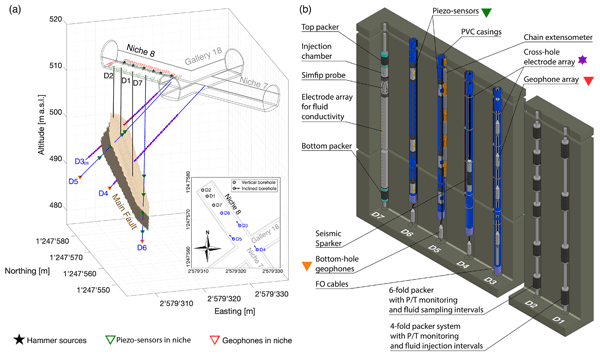Multiple new publications related to the advancement of safe geologic carbon storage
Already this year: three new publications related to advancing our understanding of shales as CO2 storage caprocks. A collaboration between the ETH Zurich, Mont Terri Underground Lab, Lawrence Berkeley National Labs, and Imperial College London.

Research on the external page ACT ELEGANCY project aimed to progress low emission energy technologies through combined hydrogen energy production and carbon capture and storage. Our focus at the ETH Zurich was to perform a pilot test at the external page Mont Terri Underground Laboratory, where CO2 saturated brine was injected through a meter-thick fault zone to study potential leakage pathways. external page Zappone et al., 2021 details the field scale experimental set-up and characterization. This work is a collaboration between ETH Zurich, Lawrence Berkeley National Laboratory, and the Mont Terri Underground Laboratory. The structural and petrophysical property characterization of the experimental site is presented in external page Wenning et al., 2021a, which focuses on a comparison of both the host and fault rocks. Finally, In collaboration with researchers at Imperial College London, external page Wenning et al., 2021b shows how fluid flow through fractured shale can initiate a self‐sealing process (brine) – whereby the fracture effectively closes – or can be prevented (decane), providing the possibility to further engineer and control the behavior of fractured media.